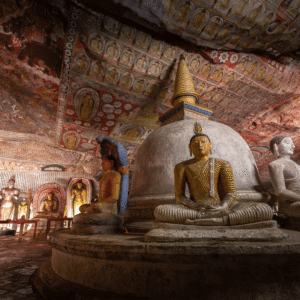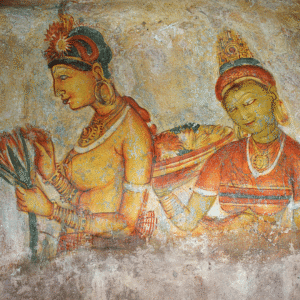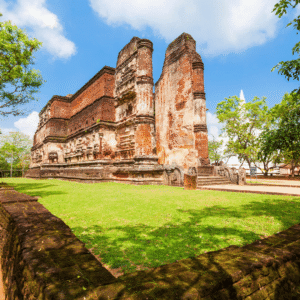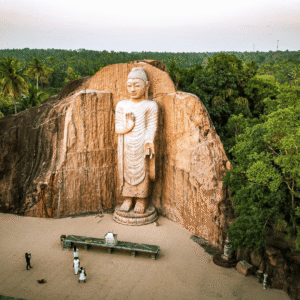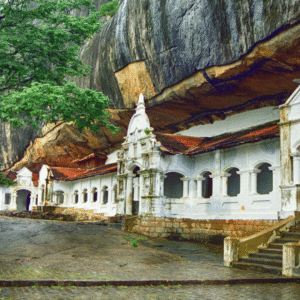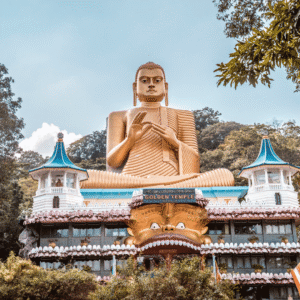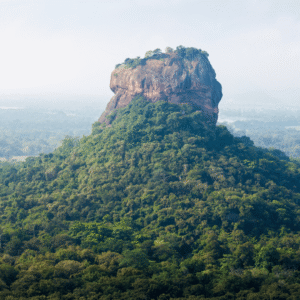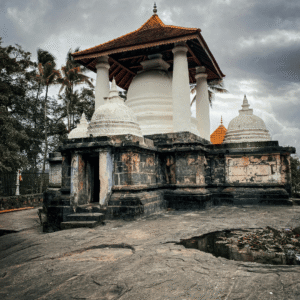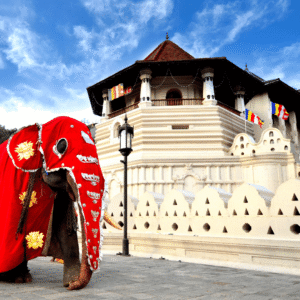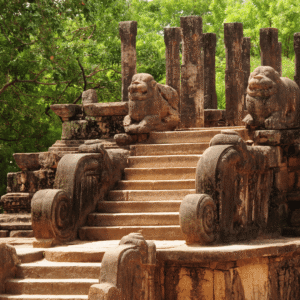Découvrir le Sri Lanka
Let's get an Idea.
What is Special About This Beautiful Island
- Location: 40km Southeast to the Indian Sub-Continent
- Area: 65600 km2
- Population: 19 million
- Climate: Tropical, Low country 24.4°c – 31.7°c
- Hill Country: 17.1°c – 26.3°c
- Annual Rain fall: 1991mm
- Capital: Sri Jayawardenapura
- Commercial Capital: Colombo
- Population: 19.5 Million
- Ethnic groups: Singhalese 74%, Sri Lankan Tamils 12.6%, Indian Tamils 5.5% Moors 7.1% Others 0.8%
- Religion: 69% Buddhist, 15% Hindu, 8% Muslim, 8% Christian
- Life Expectancy: Men 70Yrs / Women 75Yrs
- Economy: Agriculture (Rice, Tea, Rubber, Coconut & Spices) Textiles, Tourism, Fishing & Mining
- Employment: Agriculture 34.1%, Industry 21.4%, Services 44.5%
- Literacy Rate: 92%
- Per Capita Rate: US$ 1025
- Inflation rate: 9.5%
- Languages: Sinhala, Tamil and English
- Density: 310
Practical information
- International dialing code: +94
- Time: 6 hours ahead of Greenwich
- Electricity: 230V
- Currency: Rupees $ £ € and credit cards are accepted in Reputed establishments) Banks are open from 08.30 to 14.30Hrs
Credit cards accepted. - What to wear: Light cotton dresses, & light weight suits
- Visiting religious sites: When visiting Buddhist & Hindu Temples, Visitors are expected to be dressed in proper attire. Skirts or long trousers – Shorts & swimwear are Not allowed. Remove hats and shoes before Entering Hindu & Buddhist temples
Demography
Sri Lanka has a population of 18.5 million of whom the majority are Sinhalese (74%). Other ethnic groups are made up of Sri Lankan Tamils (12.6%), Indian Tamils (5.5%), Moors, Malays, Burghers (of Portuguese & Dutch descent) and others (7.9%).
Although Sri Lanka is a multi-religious country, Buddhists constitute the majority with 69.3%. Other religious groups are Hindus 15.5%, Muslims 7.6% and Christians 7.5%. Sri Lanka’s literacy rate of 88.6% is one of the highest in Asia.
Important
The Department of Immigration and Emigration of Sri Lanka launched a system of visa to enter the territory of Sri Lanka.
To obtain your visa, thank you for visiting, www.eta.gov.lk
Location and Physical Features
Sri Lanka, an island in the Indian Ocean is located to the south of the Indian subcontinent. It lies between 5O 55’ and 9O 55’ north of the equator and between the eastern longitudes 79O 42’ and 81O 52’. The total land area is 65,610 sq. km. and is astonishingly varied. A length of 445 km. and breadth of 225 km. encompasse beautiful tropical beaches, verdant vegetation, ancient monuments and a thousand delights to please all tastes. The relief features of the island consist of a mountainous mass somewhat south of the centre, with height exceeding 2,500 metres, surrounded by broad plains. Palm fringed beaches surround the island and the sea temperature rarely falls below 27OC.

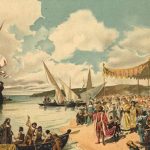
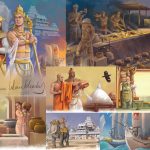




19 million
Population
24.4°c - 31.7°c
Climate: Tropical, Low country.
Colombo
Commercial Capital
65600 km2
Area
Sri Lanka : Une île aux trésors, entre nature et culture
Un écrin exotique au cœur de l’océan Indien
À seulement 40 km du sous-continent indien, le Sri Lanka vous invite à découvrir une terre vibrante, où chaque paysage raconte une histoire. De ses plages dorées bordées de cocotiers à ses montagnes verdoyantes enveloppées de brume, chaque instant est une immersion dans un décor de rêve.
Un territoire riche et varié
S’étendant sur 65 610 km², l’île dévoile une incroyable diversité : jungles luxuriantes, plantations de thé ondulantes, temples millénaires et cités animées.
Un peuple chaleureux et une culture vivante
Avec 22.5 millions d’habitants, le Sri Lanka est un véritable carrefour de traditions et de cultures. Son peuple, réputé pour son hospitalité, vous accueille avec un sourire sincère et une générosité sans pareil.
Un climat tropical toute l’année
- Côte et plaines : Une chaleur ensoleillée de 24,4°C à 31,7°C.
- Régions montagneuses : Une douceur agréable entre 17,1°C et 26,3°C, idéale pour une escapade au cœur des plantations de thé.
- Pluies bienfaitrices : Avec 1 991 mm de précipitations annuelles, la nature éclate de couleurs et de parfums.
Un mélange entre histoire et modernité
- Sri Jayawardenapura Kotte, la capitale administrative, incarne l’histoire et la gouvernance du pays.
- Colombo, ville dynamique et cosmopolite, vibre au rythme de l’économie et de la culture sri-lankaise.
Une mosaïque ethnique et religieuse
Le Sri Lanka est une terre où la diversité crée l’harmonie. Ses habitants sont un mélange unique de Singhalais, Tamouls et Maures, chacun apportant sa richesse culturelle.
- Bouddhisme : 69%
- Hindouisme : 15%
- Islam : 8%
- Christianisme : 8%
Une économie entre traditions et modernité
Le pays vit au rythme de ses ressources naturelles et de ses innovations :
- Agriculture : Thé, riz, caoutchouc, épices aux arômes envoûtants
- Industrie textile : Un savoir-faire reconnu mondialement
- Tourisme : Une destination prisée pour ses trésors naturels et culturels
- Répartition des emplois :
- Agriculture : 34,1%
- Industrie : 21,4%
- Services : 44,5%
Un pays tourné vers l’éducation et l’avenir
- Taux d’alphabétisation : 92%, un des plus élevés de la région
- Espérance de vie : 70 ans pour les hommes, 75 ans pour les femmes
- Revenu par habitant : 1 025 USD
- Taux d’inflation : 9,5%
Une terre plurilingue
Au Sri Lanka, les langues reflètent la diversité de sa population. Sinhala, Tamil et Anglais sont parlés, facilitant les échanges et l’accueil des voyageurs.
Un équilibre entre nature et urbanisation
Avec une densité de 310 habitants/km², l’île préserve ses espaces sauvages tout en développant des infrastructures modernes, offrant un cadre de vie dynamique et préservé.













Sri Lanka – Visa et Formalités
Votre passeport pour l’aventure
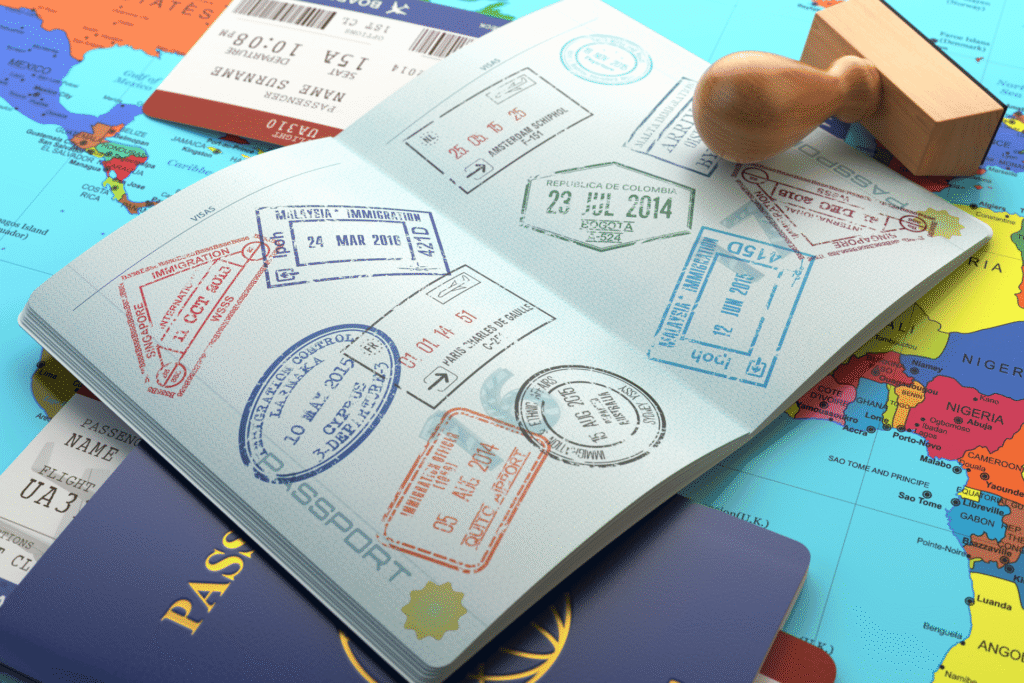
Le Sri Lanka vous accueille avec ses paysages somptueux et son patrimoine fascinant. Pour profiter pleinement de votre séjour, il est essentiel d’obtenir votre visa électronique (ETA) avant votre arrivée.
Comment obtenir votre visa ?
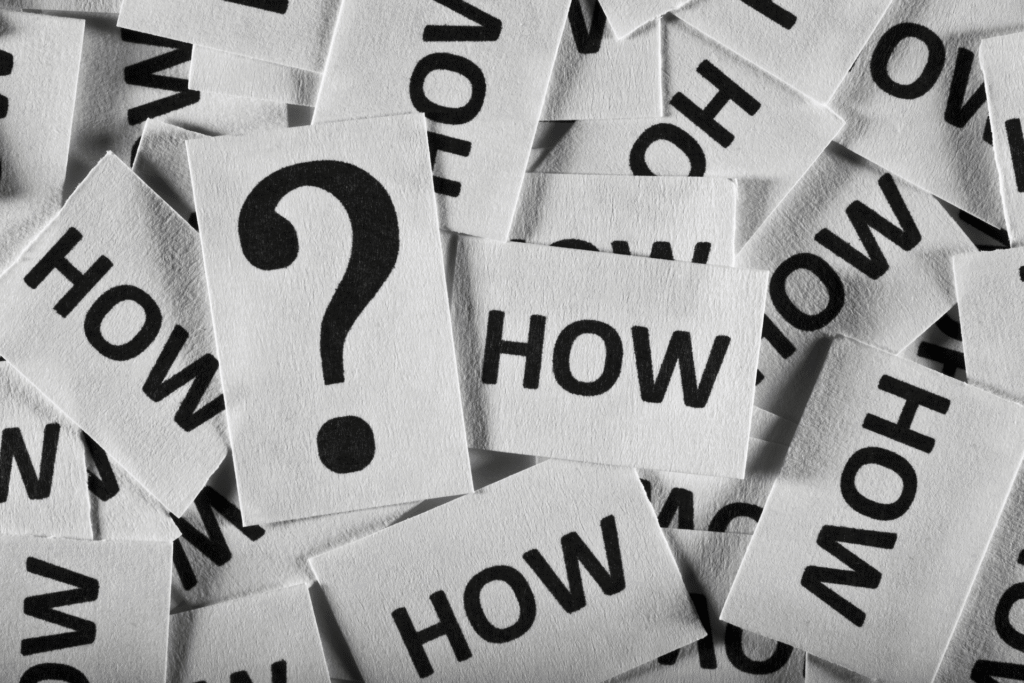
Le Département de l’Immigration et de l’Emigration du Sri Lanka a mis en place une procédure simplifiée pour faciliter votre entrée sur le territoire.
🔹 Rendez-vous sur le site officiel : www.eta.gov.lk
🔹 Remplissez votre demande en ligne en quelques minutes
🔹 Recevez votre confirmation et préparez votre voyage en toute tranquillité
Conseils pratiques




Le Sri Lanka vous attend avec ses temples ancestraux, ses plages paradisiaques et son accueil légendaire. Préparez votre voyage dès aujourd’hui et laissez-vous émerveiller par cette île aux mille trésors !
Informations Pratiques pour votre séjour au Sri Lanka
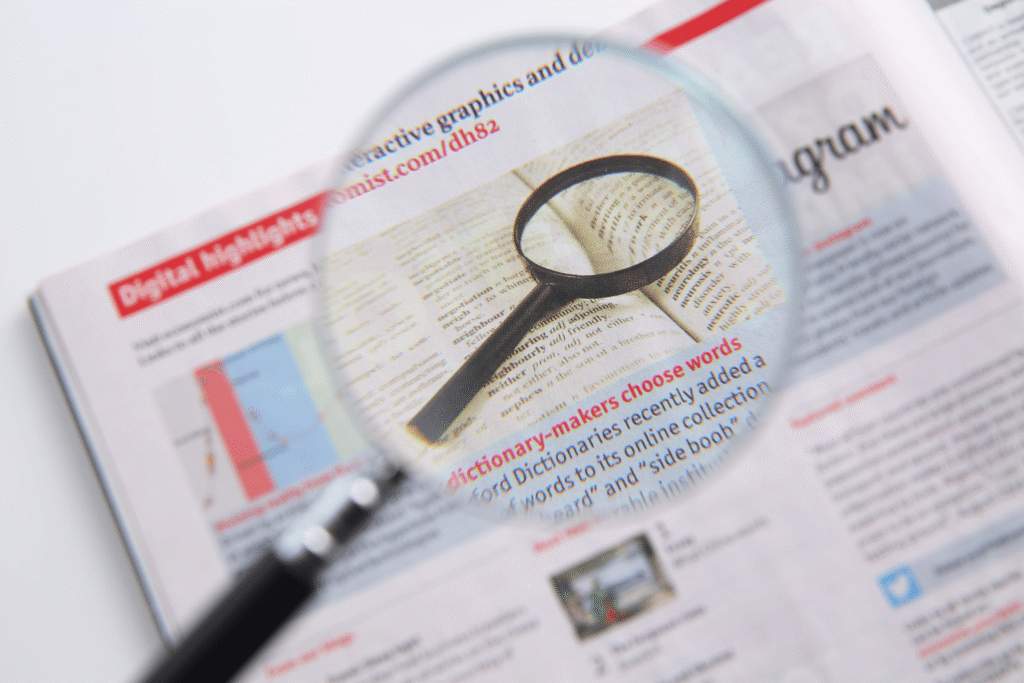
Indicatif téléphonique international : +94
Fuseau horaire : GMT +6 heures, permettant de profiter pleinement des journées ensoleillées.
Électricité : 230V – Pensez à vérifier la compatibilité de vos appareils avant votre voyage.
Monnaie & paiements
- La devise locale est la roupie sri-lankaise (LKR).
- Les dollars ($), livres (£) et euros (€) sont acceptés dans les établissements de renom.
- Paiement par carte bancaire disponible dans les hôtels, restaurants et boutiques réputés.
- Banques ouvertes de 08h30 à 14h30.
Tenue vestimentaire recommandée
- Vêtements légers en coton pour rester au frais sous le climat tropical.
- Costumes légers pour les occasions plus formelles.
Visites des temples bouddhistes et hindous
Les visiteurs sont invités à respecter les traditions locales :


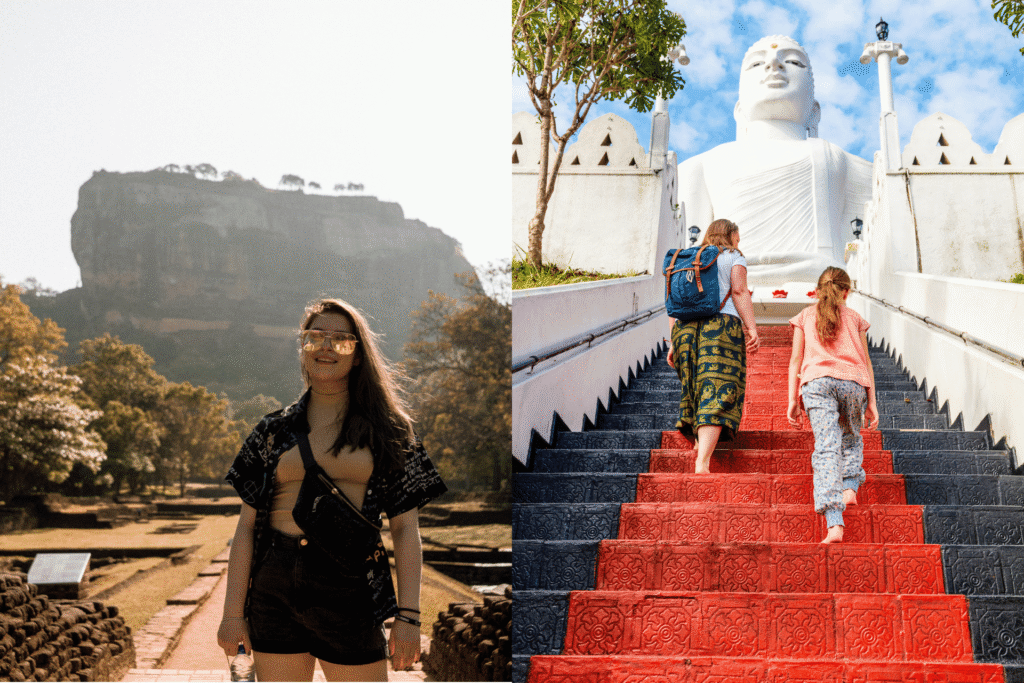



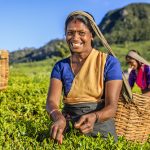








Sri Lanka : Une île façonnée par l’histoire et le temps
Aux origines d’une terre mythique
Bien avant que les royaumes s’élèvent et que les temples se dessinent sous le ciel sri-lankais, des peuples nomades arpentaient ces terres fertiles. Les vestiges néolithiques révèlent que la culture du riz et la cueillette faisaient déjà partie de la vie des premiers habitants. Mais c’est avec l’arrivée des Aryens du nord de l’Inde que l’île connut son premier grand tournant.
Anuradhapura, l’éveil d’une grande civilisation
Ces peuples venus d’Inde apportèrent des avancées majeures :


Parmi ces premiers établissements, Anuradhapura s’imposa comme une capitale florissante sous le règne du roi Pandukabhaya, fondateur légendaire de la cité.
L’aube d’une spiritualité éternelle
En 247 av. J.-C., l’histoire prit un nouveau souffle : sous le règne du roi Devanampiya Tissa, Arahat Mahinda, fils de l’empereur Asoka de l’Inde, introduisit le bouddhisme sur l’île. Ce fut un bouleversement culturel majeur, imprégnant chaque pierre, chaque cité et chaque rite de son influence. Sri Lanka devint alors une terre de spiritualité et de prospérité, où l’art et l’architecture atteignirent des sommets de raffinement.
Luttes, conquêtes et transformation du royaume
- IIe siècle av. J.-C. : Les invasions du sud de l’Inde prennent le contrôle du nord de l’île.
- Dynastie Lambakarna (Ier – IVe siècle apr. J.-C.) : Une période marquée par l’essor des techniques d’irrigation.
- Roi Mahasen (IIIe siècle apr. J.-C.) : Initiateur des premiers réservoirs d’eau géants, qui changèrent le paysage agricole du pays.
- Roi Dhatusena : Grand bâtisseur de réservoirs, assassiné par son fils Kasyapa, qui fit de Sigiriya une cité royale impressionnante, sculptée dans la pierre.
Polonnaruwa, l’âge d’or d’un nouveau royaume
Lorsque la capitale Anuradhapura tomba sous les invasions au Xe siècle apr. J.-C., le roi Vijayabahu Ier repoussa les envahisseurs et établit Polonnaruwa comme le cœur du royaume.
Les souverains Parakrama Bahu le Grand et Nissanka Malla firent de cette cité un joyau architectural, où les palais et les stupas résonnent encore des récits d’un âge d’or révolu.
L’ère coloniale et l’évolution moderne
- 1505 : L’arrivée des Portugais, attirés par le commerce des épices, mais désireux de s’emparer du territoire.
- 1656 : Les Néerlandais prennent le relais et établissent leur domination sur la côte.
- 1796-1948 : Les Britanniques s’imposent et transforment l’île avec l’essor du thé, du café, du caoutchouc et de la noix de coco.
Vers la liberté et une nouvelle identité
Après des siècles d’influences étrangères, Sri Lanka amorça une transition pacifique vers l’indépendance, obtenue en 1948. Aujourd’hui, l’île est une République souveraine, vibrante de son passé et tournée vers l’avenir, membre du Commonwealth et des Nations Unies.
Un héritage vivant, une histoire à chaque pas
En parcourant les ruines d’Anuradhapura, en gravissant Sigiriya, en méditant au cœur des temples de Kandy, chaque pierre et chaque paysage racontent un récit. Ici, le passé est une force, un fil d’or qui relie l’ancien et le moderne dans une harmonie intemporelle.
